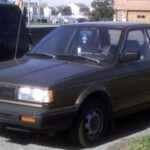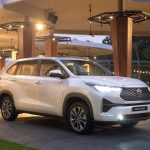Quietly but determinedly, the Sunny empire has shone as brightly as its name suggests and proved its sustainability through its driving ability and fuel efficiency.
>> A closer look at the Nissan Sunny 2013 in Vietnam
>> Nissan revives Sunny in Vietnam
When drivers hear the name “Sunny,” they think of Nissan. Because Nissan Sunny and before that, Datsun Sunny, have dominated all roads along with the Toyota Corolla since the 1960s.
Quietly but determinedly, the Sunny empire has shone as brightly as its name suggests and proved its sustainability through its driving ability and fuel efficiency.
Starting in 1966, with nearly 60 years of existence and development, up to the present time, 16 million units – a huge number – have been sold in over 140 countries and territories, which is the clearest evidence of the spreading influence that Sunny has brought.
1st Generation B10 (1966-1970)
The Datsun Sunny, exported under the name Datsun 1000, was launched in September 1966 with two body styles: 2-door sedan and wagon. All were available in “Standard” and “Luxury” versions, equipped with drum brakes, conventional leaf springs at the rear, and independent A-arm front suspension. The front of the car used a single transverse leaf spring. In Japan, Sunny appeared in the same year as the Toyota Corolla and also exclusively for a specific sales channel called Nissan Satio Store.
Datsun Sunny Deluxe 1966
The car was equipped with a 988cc A10 4-cylinder inline engine and a 4-speed gearbox. The 1968 model was introduced in October 1967 as an addition to the 4-door sedan with a total power of 62 horsepower at 6000 rpm. A year later, the Japanese automaker introduced a new coupe. Called the “Sunny Coupe,” this car was available in a range of levels from “Standard” to the super luxurious GL version.
Australia was the only market outside of Japan to receive the coupe, called the “Datsun 1000 Coupe,” and was only available in the “Luxury” version. The Australian version was standard equipped with many features found in the optional equipment packages of similar models sold in Japan.
2nd Generation B110 (1970-1973)
The 2nd-generation Sunny was introduced in 1970 and was known as the Datsun 1200. This new model was slightly larger than the first generation to compete with its main rival, the Toyota Corolla.
The Datsun 1200 was equipped with a MacPherson strut front suspension with standard disc brakes and a fuel-efficient A12 1.2-liter engine. A 5-door station wagon was added to the 3-door wagon model.
Datsun 1200 1971
In April 1970, the GX Grand Luxury version with a 2-carburetor engine was added for the Japanese market. In January 1972, another modified model appeared on this market with a convertible, a new radiator grille, and some minor design modifications.
In August 1972, the GX5 model was added to the Japanese market, improving the GX model by installing a 5-speed manual transmission. In 1973, the models in the U.S. market were redesigned with energy-absorbing bumpers, fire-resistant interiors, and other safety features required by the government.
The Datsun 1200 was also the most fuel-efficient car in the U.S. in 1973, according to federal evaluations, at 6.21/8.2 liters per 100km highway/combined, and it was also the cheapest car in the U.S. at only $1866.
In Australia and New Zealand, the Datsun 1200 was highly regarded for its ability to be converted into a powerful 2WD racing car.
In South Africa, the B110 was sold until 1976. In fact, a pickup truck with a 1400cc engine was sold until 2008 when emission laws were enacted. Over 275,000 vehicles have been sold to customers who appreciate the powerful rear-wheel drive design.
In New Zealand, the special edition Datsun 1200 SSS 4-door sedan with twin Dell’Orto 40mm carburetors and other unique features was developed, assembled, and sold domestically. The 1200 was popular in New Zealand, where it was assembled under contract at several different plants. The car continued to be produced well until 1974 when Nissan NZ was unsure how the public would react to the somewhat odd-looking 120Y successor.
In North America (U.S. and Canada), during the 1971-1973 period, an average of about 44,000 Datsun 1200s were sold per year.
3rd Generation B210 (1973 – 1978)
Introduced as the Datsun 120Y and Datsun B-210 (in North America), the 3rd-generation Sunny became extremely popular when it was launched during the fuel crisis of the 70s. Six body styles were offered, including 4-door sedan, 2-door sedan, 2-door hatchback, 3-door wagon, 5-door wagon, and 2-door van. The coupes still retained the fastback shape but were equipped with a full hatch instead of a small trunk like the previous Sunny generation. Wagon and van versions were not offered in North America.
The Sunny continued to lead in fuel efficiency in North America and was one of the cheapest cars available on the market. This was partly due to its light metal construction, small A12 or A14 engine with OHV technology, and its very basic vinyl interior. At the time, hatchback coupes were a popular body style for buyers, as sedans were seen as less attractive. The B210 in the U.S. was the first Sunny to have larger bumpers – due to U.S. safety standards at the time. Other markets continued with chrome bumpers.
Datsun 120Y 1977
The special editions, Datsun Honeybee and Datsun SSS, were limited edition B-210 models, with the Honeybee released in North America and the SSS available in New Zealand and Australia. Both had minor cosmetic differences from the standard B-210. However, these models are now considered collectible items for Datsun enthusiasts.
Despite previous reservations, when launched in New Zealand in 1974, the 120Y proved to be popular alongside Nissan NZ. The 4-door sedan and 3-5 door wagon were locally produced and supplemented with some coupe models imported from Japan.
While production in Japan and sales in most markets ended with the 1978 models, the B210 series continued to be produced by Nissan South Africa until 1980.
The 1978 B210 model in the U.S. with a 5-speed manual transmission was evaluated by the U.S. Environmental Protection Agency at a rate of 4.7 liters per 100km.
4th Generation B310 (1978 -1981)
This is the last generation Sunny sold under the “Datsun” brand in Japan. The 1978-1982 5-model range of rear-wheel-drive Sunnys were offered in various body styles, including wagon, coupe, and sedan. These models were exported under the labels Datsun 120Y, 130Y, 140Y, and 150Y depending on the engine size, although Sunny was increasingly used for export.
The North American version was sold as the Datsun 210. The B310 was known for its high level of equipment and build quality at the time. It was available with A-series engines like the previous generation but the 63 series 5-speed manual transmission option of the B210 was replaced with the smaller 60 series. Leaf spring suspension was stopped, and a 4-link torsion bar configuration was temporarily discontinued. In 1980, the B310 received some minor renovations with a sleeker front end, a square headlight grille, and a redesigned dashboard.
Datsun Sunny 180Y 1978
In Japan, in February 1978, the “Excellent” trim was officially superseded by the Sunny 1400 SGX-E and 1400 GX-E, with the “E” denoting multiport fuel injection, available only in the land of the rising sun. This generation is also the last to use the previous generation’s engines and rear-wheel-drive system.
In Australia, the only wagon offered was the fastback version. In Japan, the fastback wagon was a special model called the Sunny California, targeting individual customers.
In most markets, the most popular engine available was the A12, with A13, A14, and A15 options, depending on the market’s tax regulations.
5th Generation B11 (1981- 1985)
Introduced in late 1981 at the Tokyo Auto Show, the B11 was the first front-wheel-drive Sunny, released one year ahead of its main rival, the Toyota Corolla, and exported to the U.S. as the Nissan Sentra from then on. The B11 was the first Sunny equipped with a 1.7-liter CD17 diesel engine with 61 horsepower. Most markets received 4-cylinder 1.3-liter or 1.5-liter engines. However, for some markets with strict taxation regulations, the A10 1.0-liter engine with 50 horsepower was also available.
The B11 was also the first Sunny sold in Mexico, where it was called the Tsusu, a name that continues to be used to this day.
Nissan Sentra 1984
The Sunny had a derivative called the Nissan Laurel Spirit in Japan, which was basically a better-equipped Sunny sedan to take advantage of the higher-end image of the larger Laurel lineup.
Another variant of the Sunny was the “Nissan Sunny Maxima,” which was only offered in limited quantities in the UK. This car had no relation to the much larger Bluebird Maxima, or simply Maxima in the U.S. The Sunny Maxima included some upgrades such as a sunroof, enhanced exterior trim with a 5-speed manual transmission, chrome exhaust pipe, dual-band tape radio compatible with UK broadcast specifications, and plush carpeting.
“A truly exceptional car in its day, although today, most people have forgotten it.” — Carsurvey.org (Datsun 1000)
“The Datsun 120Y is part of the Australian cultural landscape of the 80s. They were everywhere.” — Rightontime.hubpages.com
(To be continued)
Ngoc Diep (TTTD)

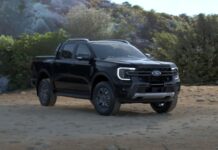
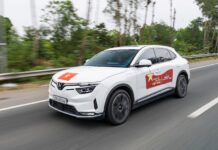
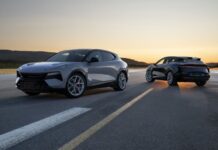
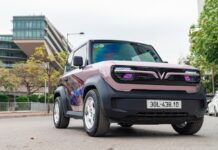

























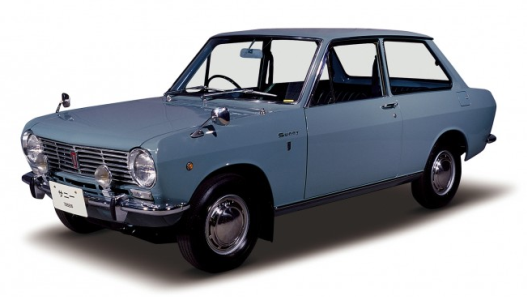
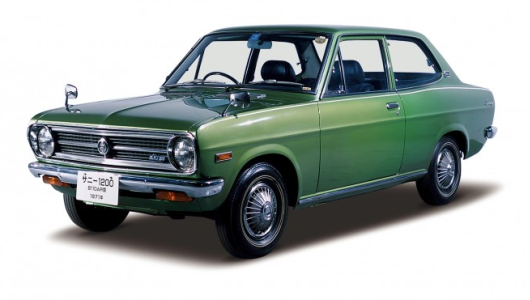

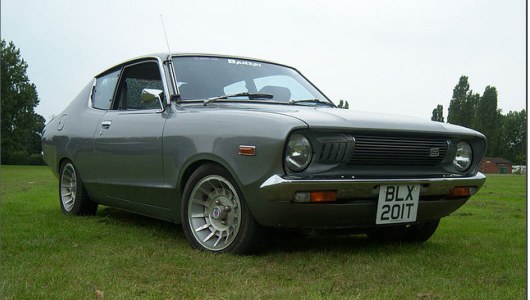

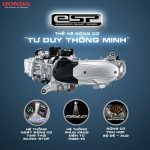
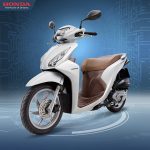
![[USER REVIEW] Honda Civic RS: Stylish, Premium, and Alluring](https://vnauto.net/wp-content/uploads/2023/10/xehay-hondacivicrs-08042023-2-150x150.jpg)
